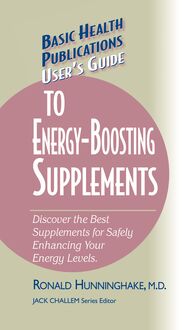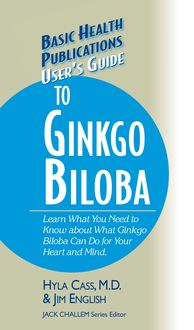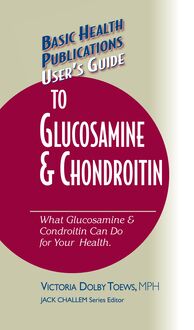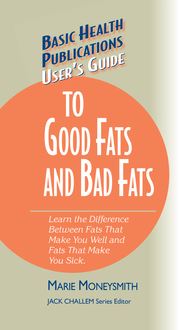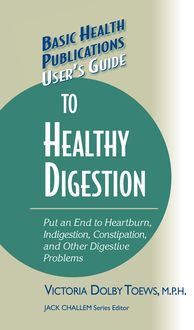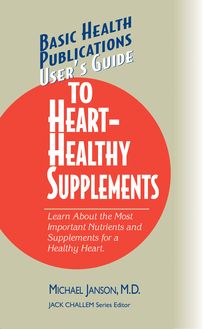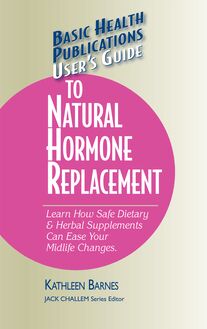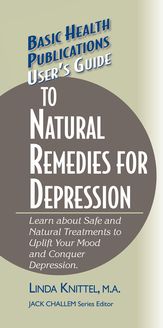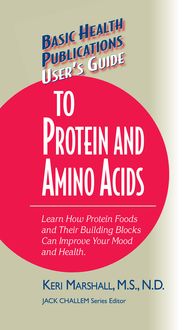-
 Univers
Univers
-
 Ebooks
Ebooks
-
 Livres audio
Livres audio
-
 Presse
Presse
-
 Podcasts
Podcasts
-
 BD
BD
-
 Documents
Documents
-
- Cours
- Révisions
- Ressources pédagogiques
- Sciences de l’éducation
- Manuels scolaires
- Langues
- Travaux de classe
- Annales de BEP
- Etudes supérieures
- Maternelle et primaire
- Fiches de lecture
- Orientation scolaire
- Méthodologie
- Corrigés de devoir
- Annales d’examens et concours
- Annales du bac
- Annales du brevet
- Rapports de stage
La lecture à portée de main
Vous pourrez modifier la taille du texte de cet ouvrage
Découvre YouScribe en t'inscrivant gratuitement
Je m'inscrisUser's Guide to Glucosamine and Chondroitin , livre ebook
Découvre YouScribe en t'inscrivant gratuitement
Je m'inscrisEn savoir plus
Vous pourrez modifier la taille du texte de cet ouvrage
En savoir plus

Description
Sujets
Informations
| Publié par | Turner Publishing Company |
| Date de parution | 01 janvier 2003 |
| Nombre de lectures | 0 |
| EAN13 | 9781591206026 |
| Langue | English |
| Poids de l'ouvrage | 1 Mo |
Informations légales : prix de location à la page 0,0298€. Cette information est donnée uniquement à titre indicatif conformément à la législation en vigueur.
Extrait
The information contained in this book is based upon the research and personal and professional experiences of the author. It is not intended as a substitute for consulting with your physician or other health care provider. Any attempt to diagnose and treat an illness should be done under the direction of a health care professional.
The publisher does not advocate the use of any particular health care protocol but believes the information in this book should be available to the public. The publisher and author are not responsible for any adverse effects or consequences resulting from the use of the suggestions, preparations, or procedures discussed in this book. Should the reader have any questions concerning the appropriateness of any procedures or preparation mentioned, the author and the publisher strongly suggest consulting a professional health care advisor.
Series Editor: Jack Challem
Editor: Roberta W. Waddell
Typesetter: Gary A. Rosenberg
Series Cover Designer: Mike Stromberg
Basic Health Publications User’s Guides are
published by Basic Health Publications, Inc.
8200 Boulevard East
North Bergen, NJ 07047
1-800-575-8890
Copyright © 2002 by Victoria Dolby Toews
ISBN-13: 978-1-59120-602-6
ISBN: 1-59120-005-9
All rights reserved. No part of this publication may be reproduced, stored in a retrieval system, or transmitted, in any form or by any means, electronic, mechanical, photocopying, recording, or otherwise, without the prior written consent of the copyright owner.
Printed in the United States of America
10 9 8 7 6 5 4 3 2 1
C ONTENTS
Introduction
1. Joints in Trouble
2. The Cartilage Healing Solution
3. A Star Is Born
4. How to Take Glucosamine and Chondroitin
5. Additional Joint Protectors
6. Using Supplements and Conventional Medicines
7. Osteoarthritis and Beyond
8. Safety Profile
Conclusion
Selected References
Other Books and Resources
To my husand, Jeff.
With luck (and a handful of supplements)
we’ll still be walking the couple of miles,
hand in hand, to the coffee shop
on Sunday mornings
when we are 90.
I NTRODUCTION
I f you have osteoarthritis, you’ve got company. Osteoarthritis, the most common form of arthritis, affects about 21 million Americans, giving this disease the dubious distinction of being more common than heart disease or diabetes. And these numbers are on the verge of ballooning as the Baby Boomers are firmly entrenched in the middle-aged years, with the achy joints to prove it. In fact, by the year 2020, the number of those with osteoarthritis is expected to hit 30 million.
The sad truth is that going to your doctor’s office is unlikely to result in lasting relief from your joint complaints. In short, conventional medicine has failed many with arthritis. In fact, the side effects of doctor-prescribed medications, such as nonsteroidal anti-inflammatory drugs (NSAIDs) that are used to mask the pain of osteoarthritis, often rival the discomfort of the disease itself. To add insult to injury, NSAIDs (the most commonly prescribed drug for osteoarthritis) can, in some cases, even promote additional joint damage. And to date, conventional medicine has nothing to offer in terms of a medication that repairs or rebuilds an osteoarthritic joint.
This is where the natural dietary supplements glucosamine and chondroitin come in. As mentioned, conventional medicine—at best—only addresses the symptoms of osteoarthritis. The crucial difference with glucosamine and chondroitin is that, for the first time, there is a remedy available which actually reverses the damage of osteoarthritis, getting to the source of the problem and repairing joint cartilage.
With glucosamine and chondroitin, you feel better not just because your symptoms are masked, but because your joints are growing new and healthy cartilage to cushion the space where bones meet. While neither promise to be magic bullets, more often than not they succeed in reducing the pain and impairment of mobility in arthritis.
Perhaps you’ve been intrigued by natural remedies’ claims for aiding health woes such as osteoarthritis, but worry that it’s “too good to be true.” Think again. Scientifically based clinical trials are stacking up in favor of the ability of glucosamine and chondroitin to provide real relief for aching joints.
It can be hard to get the real scoop about dietary supplements. Some things you read are just hype, overstating the value of a particular supplement with the goal to simply sell more bottles, while other sources are overly skeptical of any supplements and dismiss them all as a waste of money. It’s time that the plain truth is told.
This User’s Guide to Glucosamine & Chondroitin provides straightforward information—not hype—about glucosamine and chondroitin. Chapter 1 starts with the basics of understanding the problem of osteoarthritis and how your joints are damaged by this condition. Chapter 2 puts this into perspective by explaining how glucosamine and chondroitin can provide symptom relief and rebuild damaged cartilage. Realistic information about how you can expect to feel while taking these joint-friendly supplements is found here, too.
Subsequent chapters share the history and development of glucosamine and chondroitin, as well as the nuts and bolts of how to use glucosamine and chondroitin dietary supplements and information about a handful of additional supplements that aid in joint recovery. The role of conventional medications, such as NSAIDs will also be explored. Other health conditions, such as heart disease and migraines, can benefit from glucosamine and chondroitin; these will be discussed in Chapter 7 . Finally, the book will touch on minor safety concerns with the use of these supplements to ensure that you get the maximum benefit, with the minimum risk, from choosing these dietary supplements.
Isn’t it time that you found relief for your osteoarthritis? Read on to finally find an osteoarthritis remedy that offers a long-term solution to your ailment.
CHAPTER 1
J OINTS IN T ROUBLE
O steoarthritis is no fun at all. It’s a thief that can take away your ability to be fully engaged in daily activities. As it progresses, you might have days you can’t even get out of bed. It is one of the oldest and most common diseases suffered by humans. Arthritis can hit only one joint, which is especially common in the early stages of the disease, or it may affect many joints in the body. In addition, arthritis can vary in severity from a mild ache and stiffness to crippling pain and even joint deformity.
What, Exactly, Is Osteoarthritis?
Osteoarthritis is a medical disease name created from Greek terms, with “osteo” referring to bones, “arthro” indicating that joints are involved, and “itis” meaning inflammation. This is actually somewhat of a misnomer, since pain is the hallmark feature of this condition while inflammation is only rarely implicated, although it certainly involves the bones and joints. Osteoarthritis is a chronic disease involving the breakdown of the joints and surrounding tissues.
In osteoarthritis, the problem lies with the cartilage that protects the ends of bones. This cartilage is a necessary cushion between bones and when it wears away, the bones grinding together cause the common complaints of stiffness and pain. As such, osteoarthritis is the leading cause of disability.
Osteoarthritis comes in two “flavors.” Primary osteoarthritis is the more prevalent flavor, and it is a slow, but progressive, type of osteoarthritis that generally develops after age forty-five. With primary osteoarthritis, the knees and hips are the main target. The exact cause of primary osteoarthritis is not known, although obesity and family history of this disease do play a role.
Quality of Life
Osteoarthritis can have a huge impact on the quality of life. About 100,000 people in the United States alone are estimated to be unable to walk because of severe osteoarthritis in the hip or knee.
Secondary osteoarthritis, on the other hand, can be traced to a specific cause. In many cases, this cause was a traumatic event, such as a sports injury, that left the joint vulnerable. In other cases, it can be related to joint infection, surgery of the joint, or chronic trauma. An example of chronic trauma would be a repetitive motion that damages the joint, such as a baseball pitcher repeatedly throwing a ball. Most younger people with osteoarthritis have secondary osteoarthritis.
How Joints Work
Joints, as the name implies, are the point at which two bones meet. And the human body has over 100 different joints. The joints of the body are known as the articulation system and are responsible for the body’s ability to move.
There are three kinds of joints in the body, each with different movement capabilities. The three joint types are cartilaginous, fibrous, and synovial. The synovial joints, including elbows, fingers, hips, and knees, are the most complex since they allow for the greatest movement. The cartilaginous joints, such as the joints between ribs, are slightly movable. The fibrous joints, such as the bones of the skull, are generally immovable.
Osteoarthritis overwhelmingly favors the highly movable synovial joints (although cartilaginous joints very occasionally develop osteoarthritis). The term synovial joint reflects the fact that these joints contain synovial fluid. This clear, sticky fluid lubricates the joints for ease of movement and is produced in the synovial membrane which lines the joint. Synovial fluid is very important for healthy joints because cartilage does not have its own blood supply. This fluid supplies the building blocks for the repair of cartilage and removes waste products.
Synovial Joints Are Ground Zero
Synovial joints, such as those of the knee and hip, are highly movable joints and are the joints most frequently affected by osteoarthritis.
Cartilage Is the Key to Healthy Joints
Car
-
 Univers
Univers
-
 Ebooks
Ebooks
-
 Livres audio
Livres audio
-
 Presse
Presse
-
 Podcasts
Podcasts
-
 BD
BD
-
 Documents
Documents
-
Jeunesse
-
Littérature
-
Ressources professionnelles
-
Santé et bien-être
-
Savoirs
-
Education
-
Loisirs et hobbies
-
Art, musique et cinéma
-
Actualité et débat de société
-
Jeunesse
-
Littérature
-
Ressources professionnelles
-
Santé et bien-être
-
Savoirs
-
Education
-
Loisirs et hobbies
-
Art, musique et cinéma
-
Actualité et débat de société
-
Actualités
-
Lifestyle
-
Presse jeunesse
-
Presse professionnelle
-
Pratique
-
Presse sportive
-
Presse internationale
-
Culture & Médias
-
Action et Aventures
-
Science-fiction et Fantasy
-
Société
-
Jeunesse
-
Littérature
-
Ressources professionnelles
-
Santé et bien-être
-
Savoirs
-
Education
-
Loisirs et hobbies
-
Art, musique et cinéma
-
Actualité et débat de société
- Cours
- Révisions
- Ressources pédagogiques
- Sciences de l’éducation
- Manuels scolaires
- Langues
- Travaux de classe
- Annales de BEP
- Etudes supérieures
- Maternelle et primaire
- Fiches de lecture
- Orientation scolaire
- Méthodologie
- Corrigés de devoir
- Annales d’examens et concours
- Annales du bac
- Annales du brevet
- Rapports de stage



